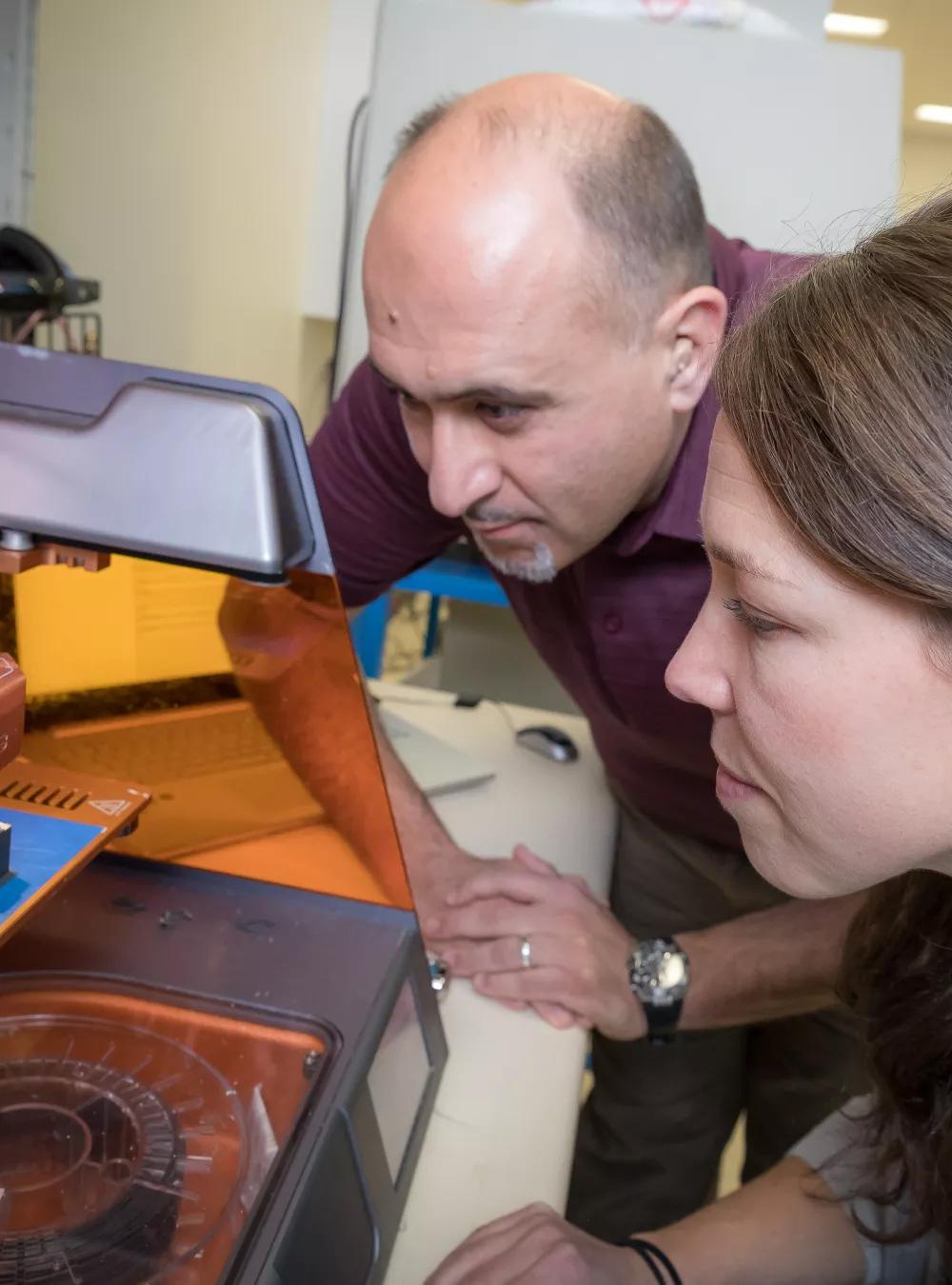By patenting our inventions, we advance technology—in areas such as cybersecurity and satellite communications—to make the world safer. We also protect government’s right to the intellectual property, even as we share it with industry for broad benefits.

MITRE's Patented Technology Benefits Government and U.S. Economy
"The MITRE Corporation doesn't manufacture products, but we do generate high impact intellectual property [IP] to meet the needs of our government sponsors," says Barry Costa, director of MITRE's Partnerships and Technology Transfer office. "And we often transfer those innovations to industry so that commercial companies can cost effectively create the products needed to carry out government missions—from cybersecurity to defense to aviation and healthcare.”
The U.S. government expects its federally funded research and development centers (FFRDCs) to pursue a variety of technology transfer activities to benefit the nation and its economy.
MITRE, which manages six FFRDCs, aims to share our IP broadly across industry while remaining focused on the needs of U.S. government agencies and citizens. Following are two examples of how we do that.
Strongarm Combats Cyber-Attacks
MITRE researchers created a technology that automatically detects, stops, and remediates phishing and malware attacks. Called "Strongarm," it was developed to help protect government organizations from cyber-attacks.
However, MITRE recognized that both the government and U.S. industry would benefit from using this technology.
Strongarm was the first incident response solution that enabled network defenders to identify victims, stop attacks, and conduct deep adversary analysis. Using this technology, network defenders can observe adversaries as they operate in real time.
It’s an intelligent DNS-blackholing solution that leverages shared threat intelligence by monitoring communication pathways and providing defenders with visibility into their adversaries.
Despite a widespread awareness of email-based cyber-attacks, phishing is still one of the most common ways for cyber adversaries to gain access to organizations' enterprise network infrastructures—specifically, their networks and endpoint computers.
In 2014, MITRE applied for a patent (Patent 9,443,075) and licensed the technology to a startup called Percipient Networks. Todd O'Boyle and Stephen DiCato, the two MITRE engineers who were most instrumental in developing Strongarm, joined that company to ready their invention to help small and mid-size businesses protect themselves and their customers from ever-evolving IT security threats.
Percipient Networks continued to evolve the technology and, in January 2019, it was acquired by WatchGuard Technologies, which has integrated Strongarm technology into its own platform. This will make MITRE-developed technology available to protect the networks of government agencies and other organizations. In addition, commercial sales of the product help grow the U.S. economy.
Novel Wideband Phased Array Antenna Aperture Improves Performance
A MITRE engineering team recently received a patent for a new class of wideband phased array antennas that improves on the state of the art and will accelerate development of high-performance and multi-function systems.
In November, the team won an R&D 100 Award for Frequency-scaled Ultra-wide Spectrum Element (FUSE), which has been licensed to industry and will soon be sent into space.
FUSE stands out as a wideband phased array antenna aperture that costs less and improves performance over comparable technologies by leveraging a novel radiating element design and advanced manufacturing technologies. It has many applications, from military to commercial satellite communications.
MITRE engineers have also leveraged a variation of the FUSE technology realized by all-metal additive manufacturing (patent pending) to make a wideband, active electronically scanned array (AESA) capability for CubeSat and other small platform applications. (Patents 9,991,605 and 10,056,699)
"The wideband characteristic allows the same phased array to support a variety of frequencies and functions or to accomplish more resilient implementations of a single function, compared to distributed narrow band antennas or mechanical pointing of dish antennas," says Wajih Elsallal, one of FUSE's developers.
"To quickly and cost-effectively test its designs, we are collaborating with a commercial space start-up that will integrate FUSE technology into its 3U Cubesat. Most of the on-orbit technology demonstration will be operated by the company for its commercial business prospects. However, the initial on-orbit demonstration will be dedicated to a MITRE data collection to explore U.S. government applications for the technology," explains MITRE's Jamie Hood, the co-lead for FUSE's development.
"This has been a successful project that solves problems for many of our sponsors and showcases our ability to create innovative technology that not only pushes the state of the art but does so at an affordable cost," says Jay Schnitzer, vice president and chief technology officer.
"And by partnering with government and industry to accelerate development, we can quickly get our technology into the market for the benefit of our sponsors."
—Beverly Wood